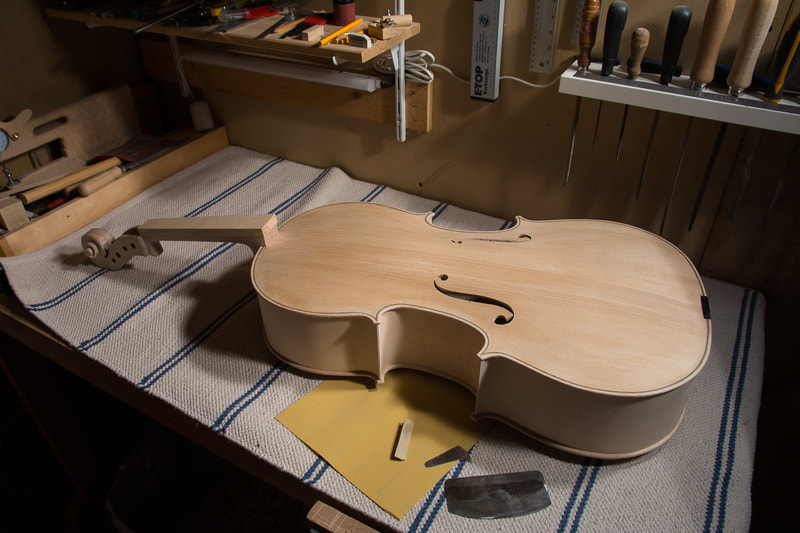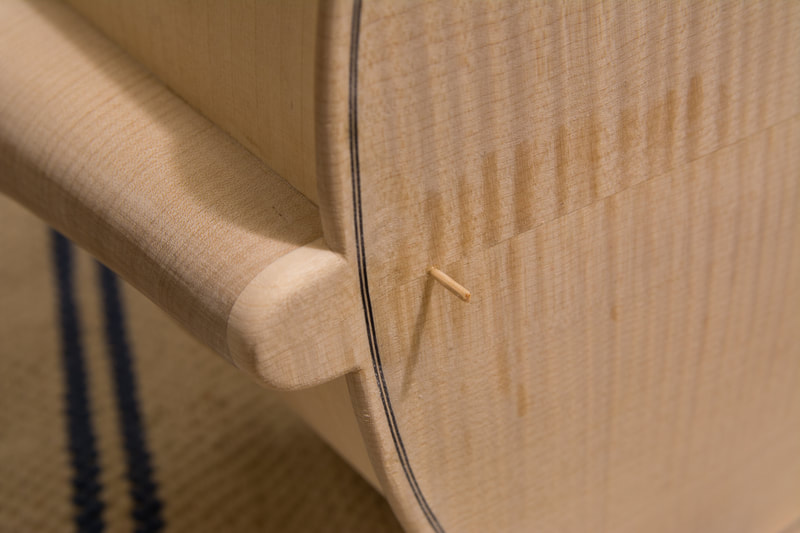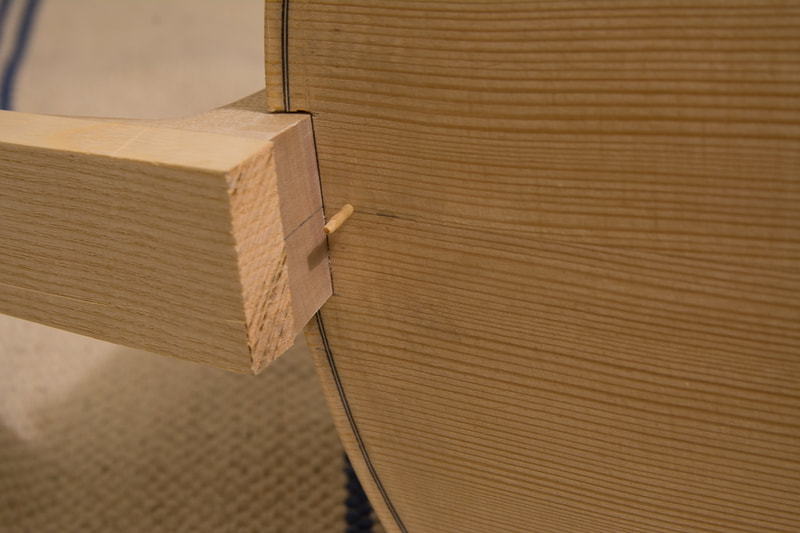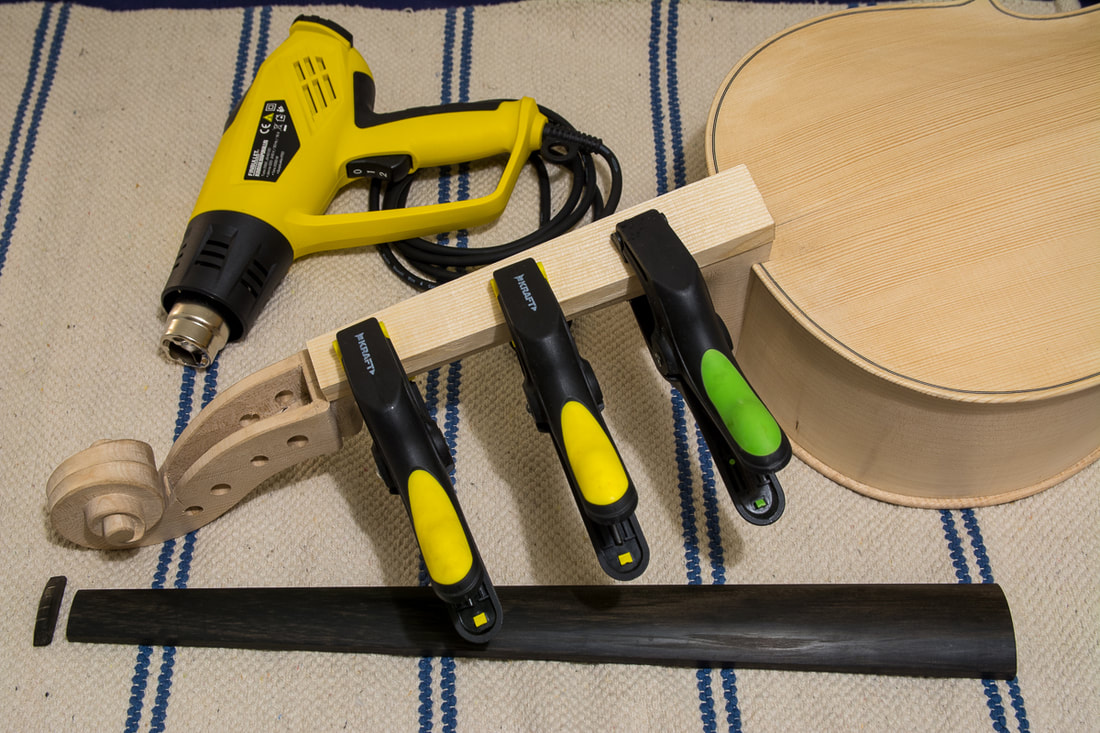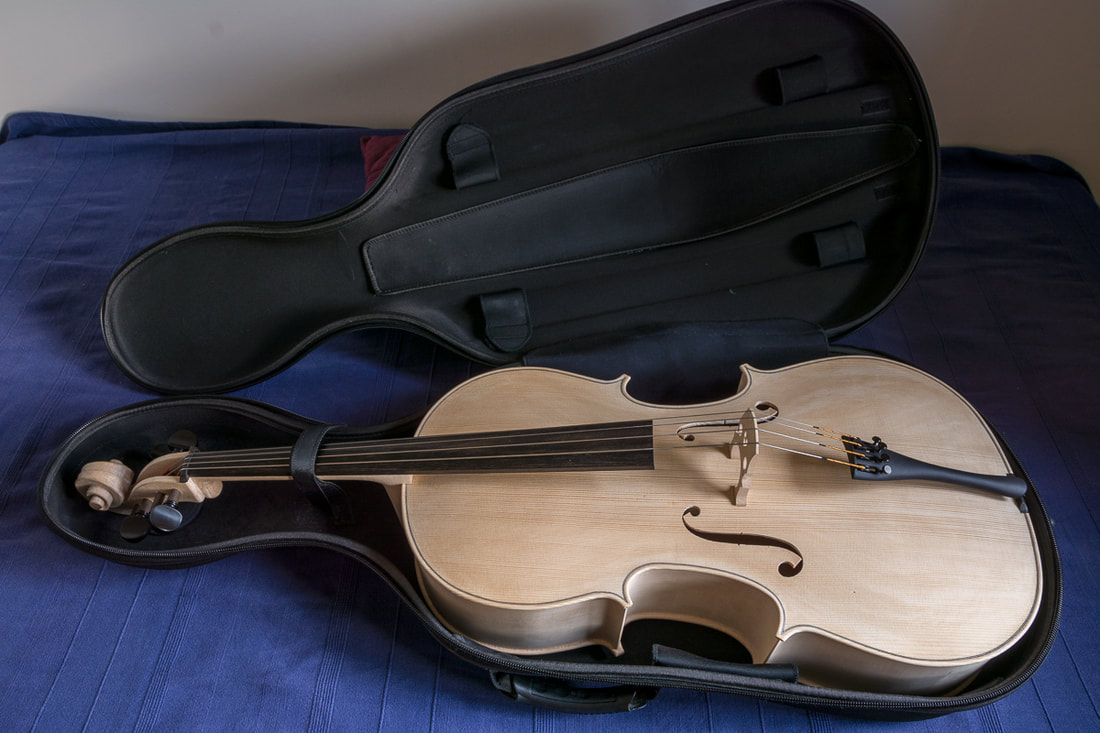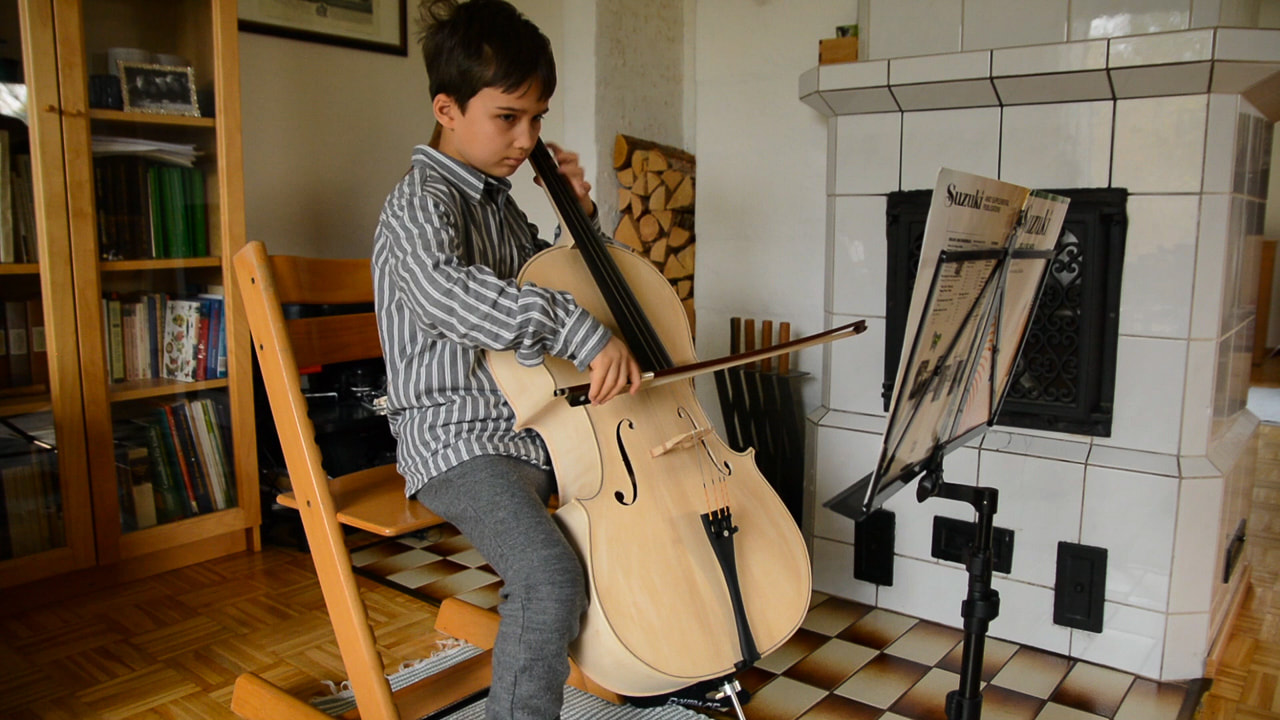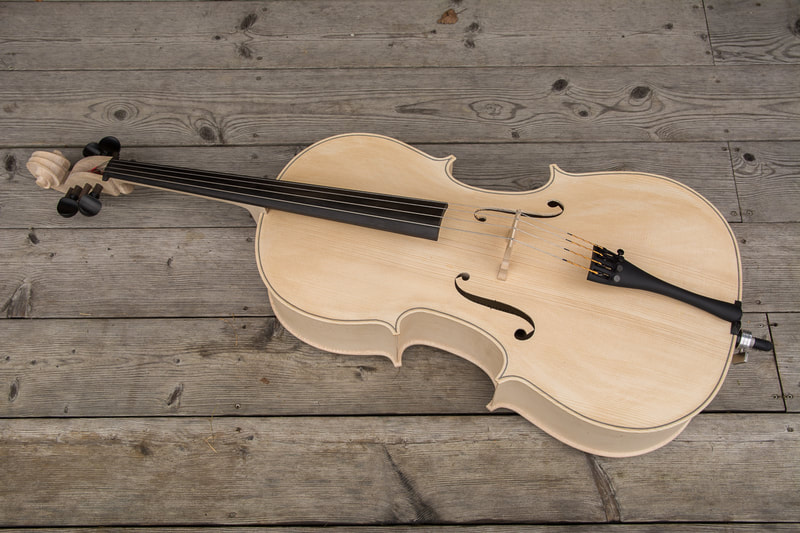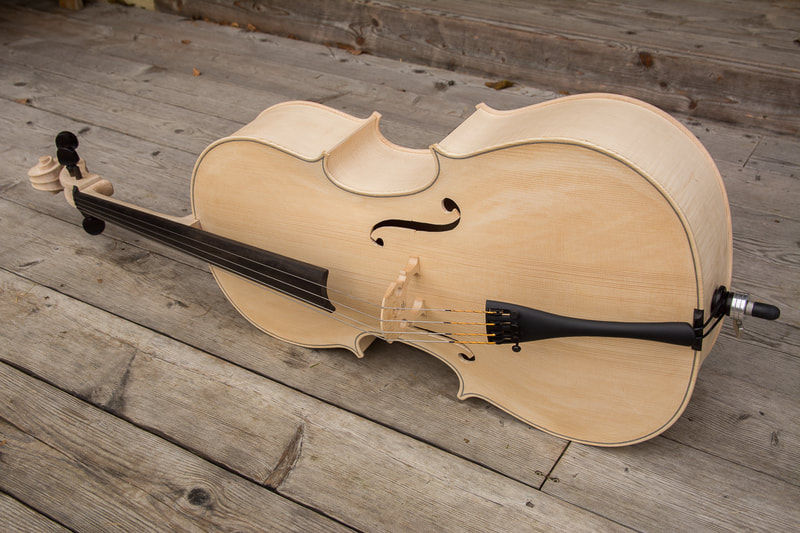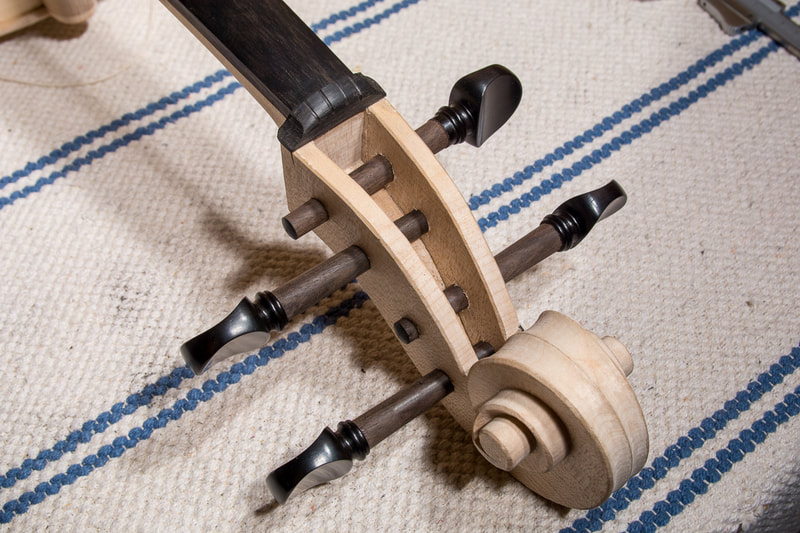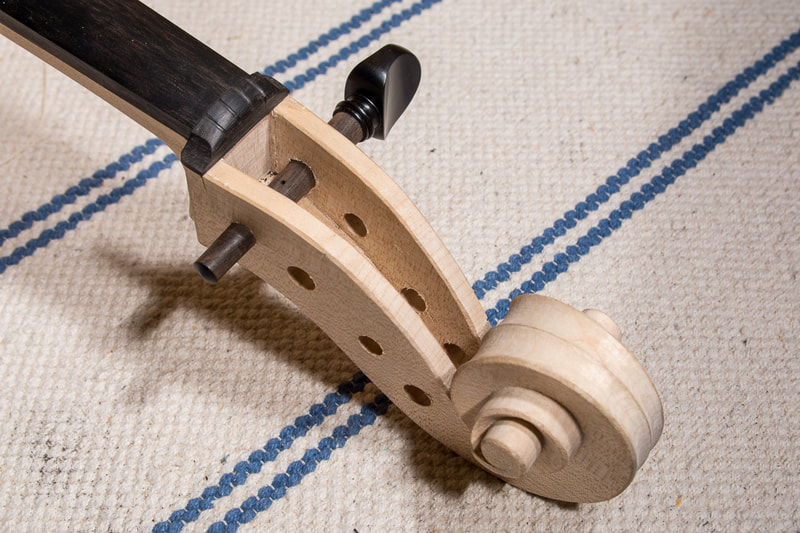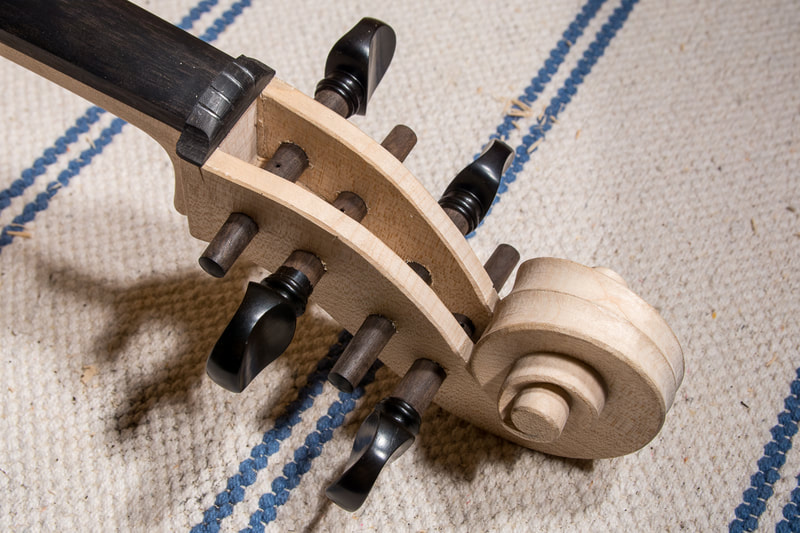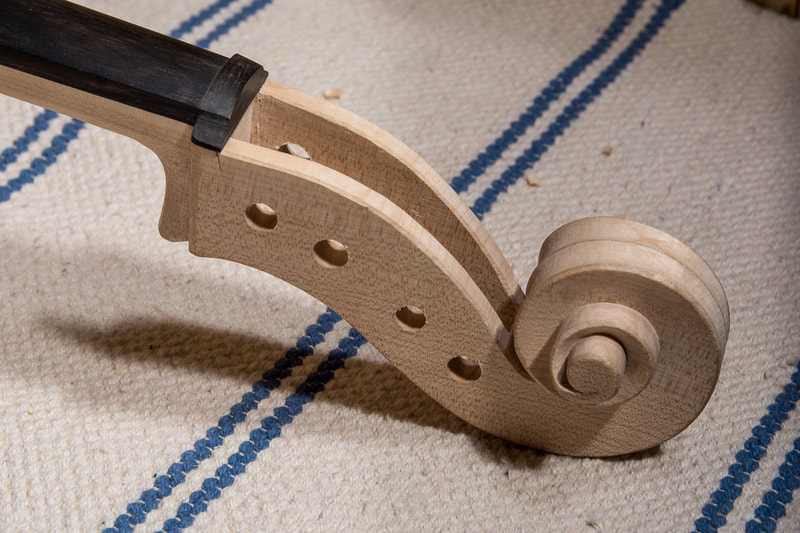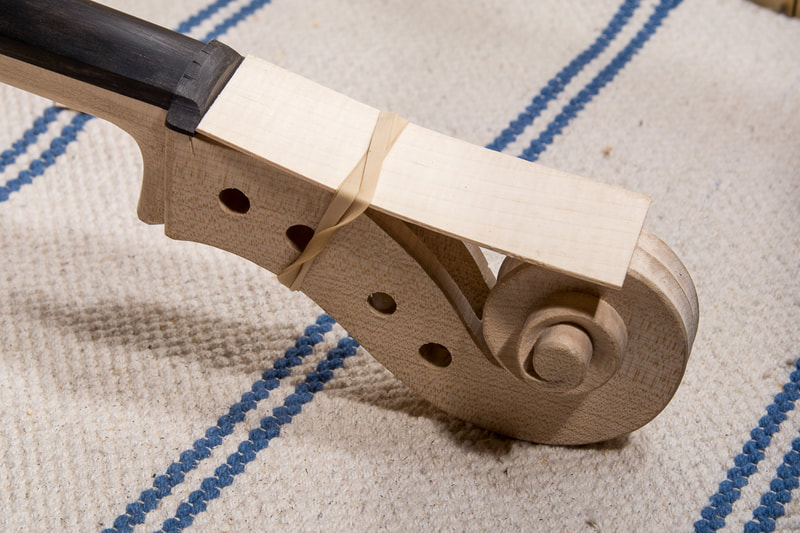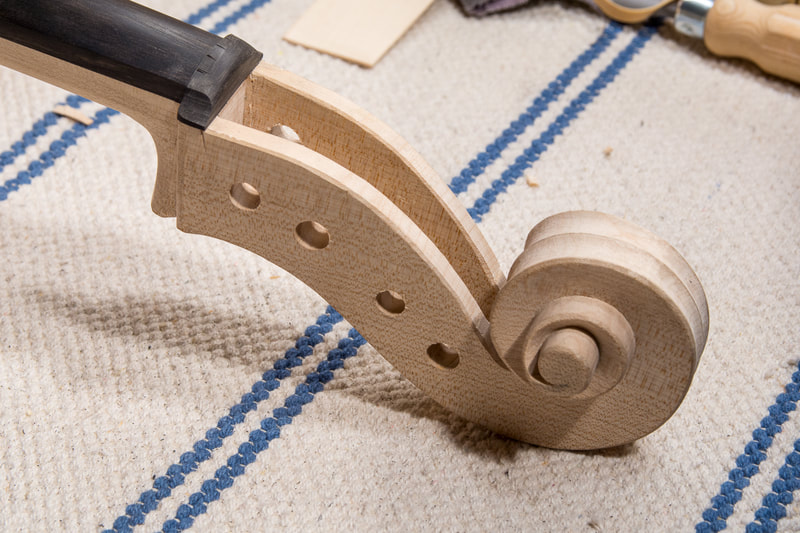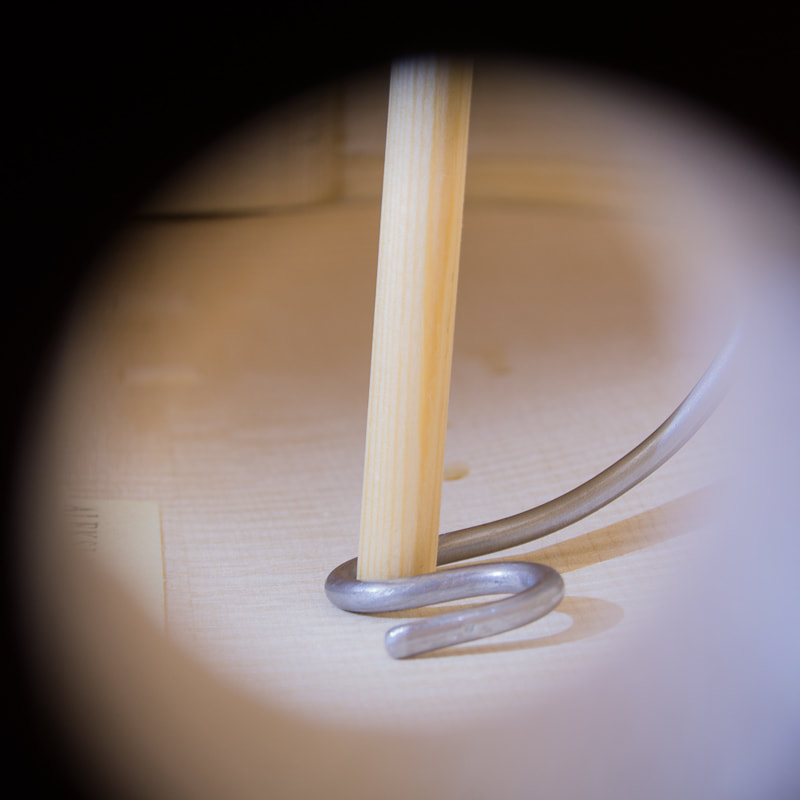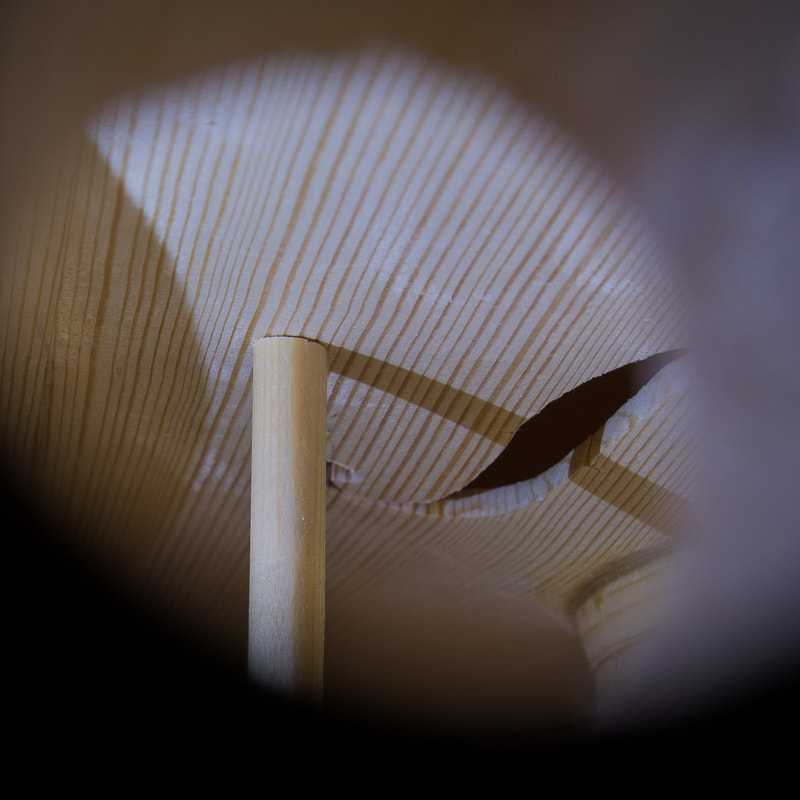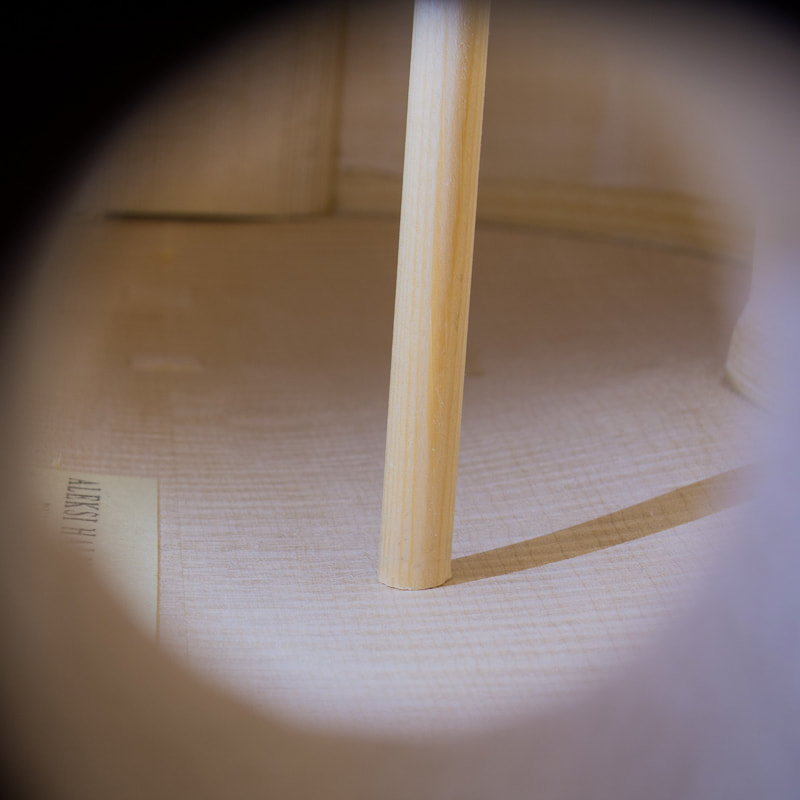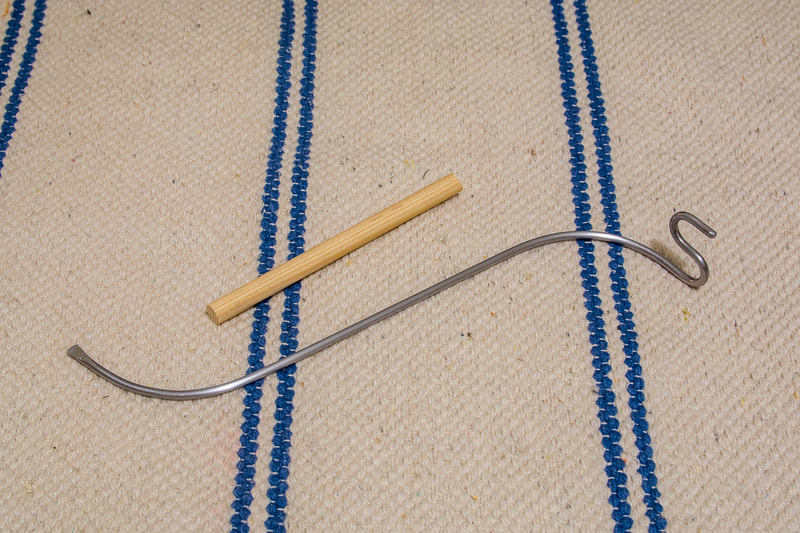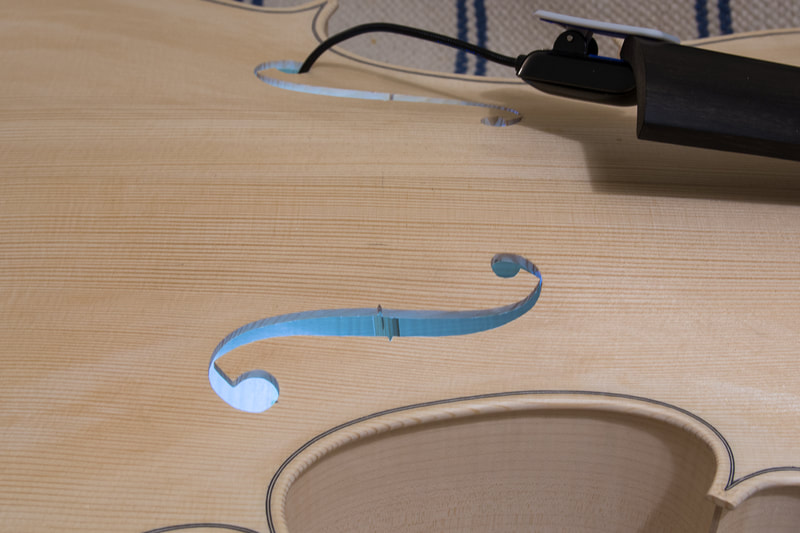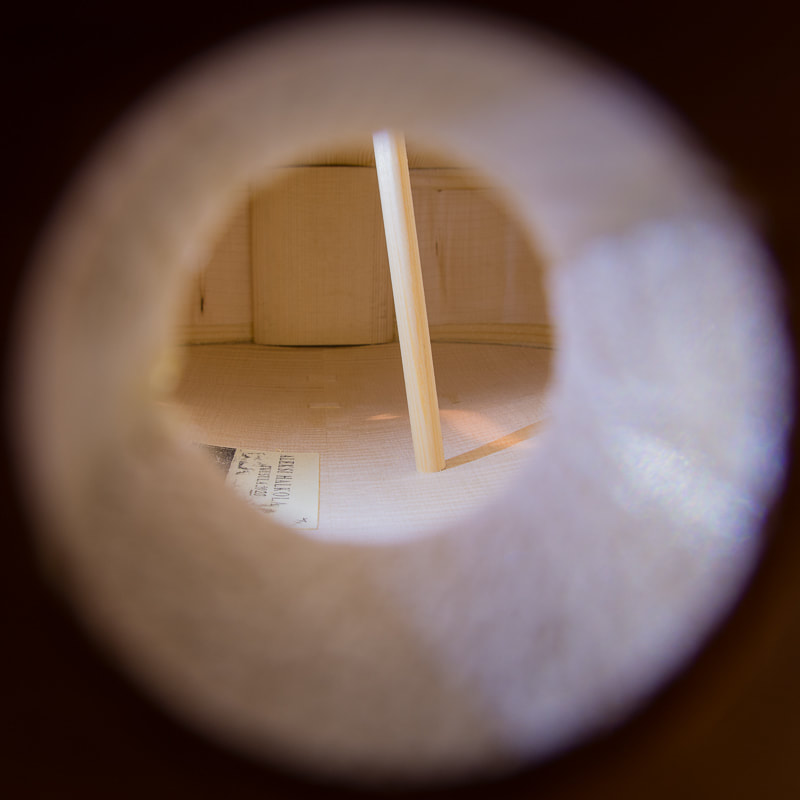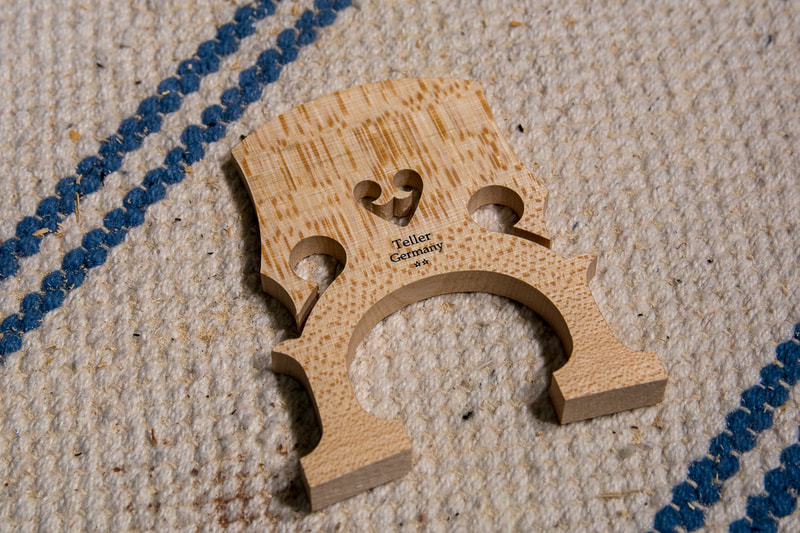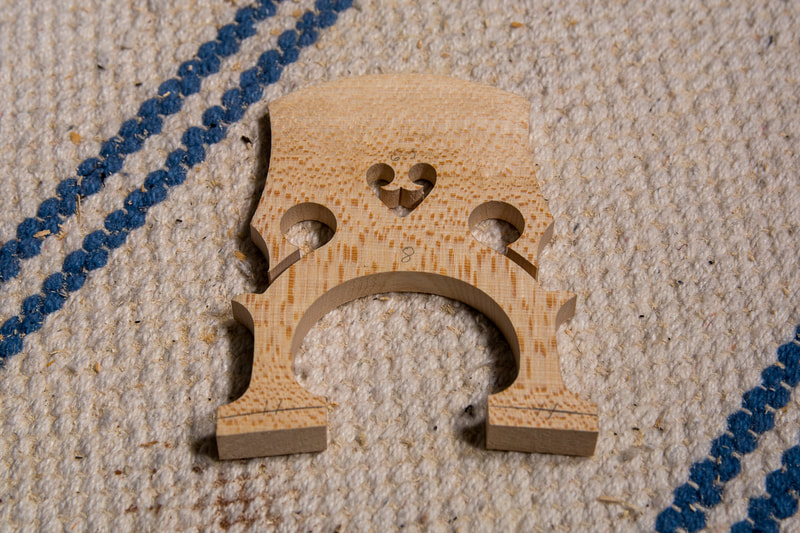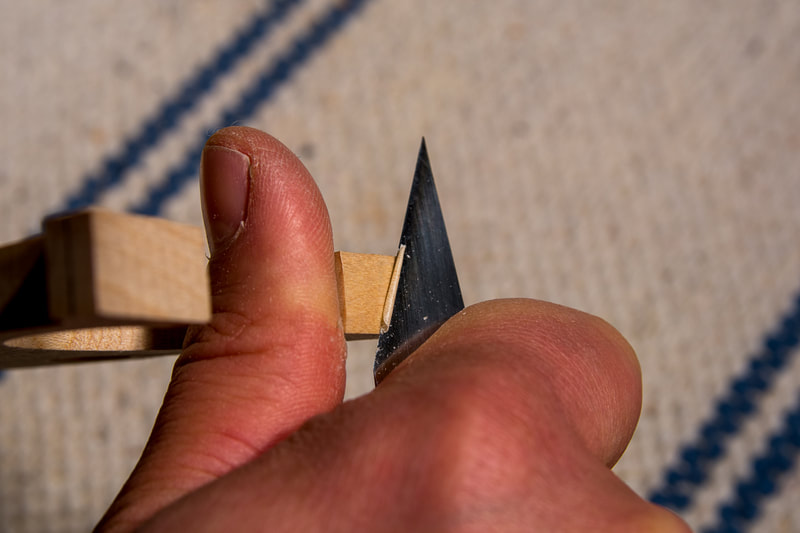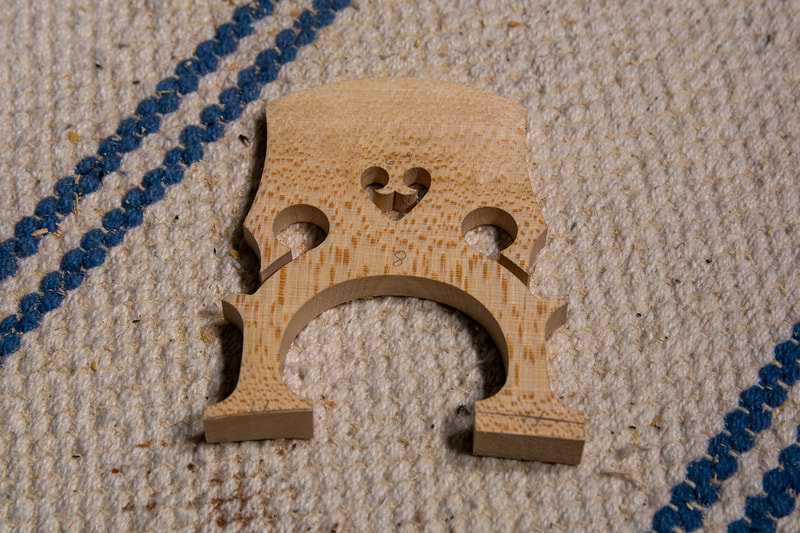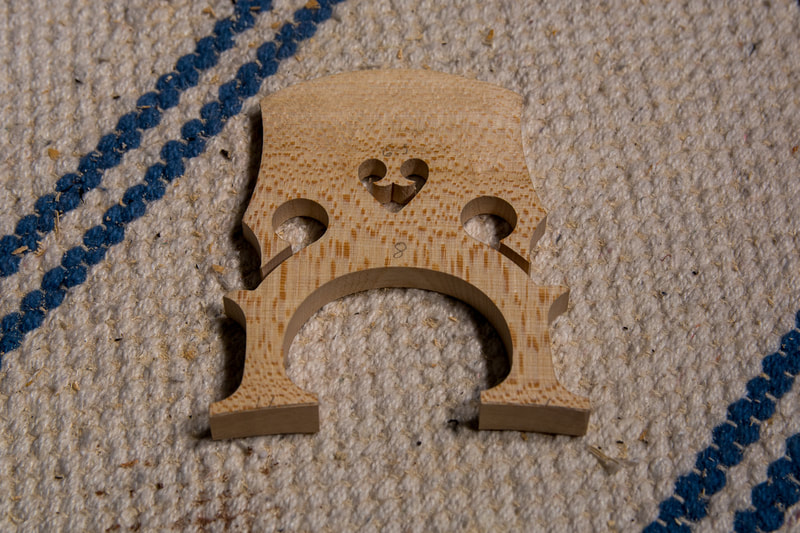|
I went around the cello with a scraper and some sand paper. I first sanded the cello all over with fine sand paper. Then I re-defined the edges with a scraper, especially around the scroll. I also noticed that I hadn't plugged all the alignment pin holes so I did that too.
Now I really have no reason not to start the varnishing.
0 Comments
In order to prepare for the varnishing, it is now time to take the fingerboard off. t was only provisionally glued with a little weak hide glue. I warmed up the spots with the glue with a heat gun and the glue just gave up. I've never done that before. But I am starting to understand why some people insist in using hide glue. It holds strongly but can be removed if the piece needs repairing. Violins and cellos but this applies equally furniture etc. I think the next time I build something other than a cello, I will also see how hide glue would work.
After the fingerboard was off, I glued a false fingerboard on. It protects the edges and surface of the neck, and also ensures the neck stays flat and true. Once the glue has set I will once more go over the whole cello and make sure the surface finish is nice. That is done mostly with a sharp scraper to leave a nice crisp appearance. Sandpaper used only sparingly where appropriate. Now that the cello looks like a cello, it is also time to get a case for it. We decided to go with a light weight version so that Elias can carry it easily.
This is a capture of the third time Elias played the new cello. I can't put videos here in this blog so a photo will have to do. Elias seems to be happy with the size of the cello as well as the size and shape of the neck and fingerboard etc. So that is great news.
Elias played the cello for the first time yesterday. After having put the strings, we tuned it together. He was really excited about that, and of course so was I. After the cello was prepared he played the Gavotte by F. J. Gossec. It was really quite an emotional moment and the whole family looked at Elias and the cello in amazement. It sounds like cello! I had tried to put the sound post and bridge etc. in the correct places as defined by some millimetres I found in books. I didn't attempt anything more fancy than that. I am very happy with the sound. It is a great relief to know it doesn't sound awful. Interesting hear how people who actually know something about these things react. I fit the strings yesterday! I wanted to concentrate on the strings so I didn't take any photos. But it was pretty straight forward in the end. I found a good, clear video on you tube which explained the process very well. The video is by Jonathan Humphries, How to Replace Cello Strings | Basics of Cello. He has lots of videos about cello, also on how to play it. They look good to me, but as I don't play the cello myself I can't really judge. Maybe I should start learning to play the cello too.
The strings are Larsen Strings for 1/2 cello (larsenstrings.com/larsen-fractional/), they were recommended by Pekka. I had fit the pegs so that they only just went through the peg box. My first idea was that I would do them properly with Pekka. But now I want to put the strings on and don't want wait until next week. So I will do all by myself first and only check with Pekka afterwards.
So I reamed the holes bigger until the shaft of the peg was about 15 mm. Did I mention already that I really need to practice reaming. The pegs are not straight. But I will let that not disturb me too much now. After the pegs went deep enough, I drilled a 1.5 mm hole in each for the string. All that remains now is to put the strings on and tune it! Now that the sound post is in place it is time to finish the nut. At least mostly. I will prepare it so that I can put the strings on but will not fine tune the clearances to the fingerboard before the final set up. They are quite close so Elias should be able to play it like this too. I used a file to round off the nut towards the pegbox. The edge towards the fingerboard should stay crisp.
Of course I couldn't keep my hands of the cello for very long. I did a few things to make the process better. I tied a string to the sound post so that I could easily pull it out of the cello if needed. And I used some tape to attach the setter to the post. That way I could quickly put it in and out and adjust a bit. From what I have read it is important that that sound post fits exactly to the front and back. For this initial "dummy" sound post I think the fit is good enough. It is there now so that I can fit the bridge, and then the strings and get some first sound so that I can make sure there are no really, really bad problems with the sound. The final setting and tuning will anyways be done after the varnishing.
I started with the sound post today. First I made a sound post setter. It's just a piece of thick wire with a sharp end to put the sound post in and a bendy end to move the sound post around. I got a little frustrated when trying to fit the sound post it kept falling of the setter in the cello. And so I decided to stop before I would do something stupid again like when reaming the end pin hole.
After having done the end pin, I started fitting the bridge. The bridge is quite tall so I need to remove a lot from the feet, other wise the heart comes too close to the strings. The bridge really should be fitted after the sounds post is in place. Which it isn't. That's why I will only go so close. The thickness of the bridge is actually already pretty close. I think I will only thin the upper part to ~2.5 mm but other wise leave it as is. At least until the cello is varnished. My plan now is to get the first sound out, make sure I don't need to open the cello again. And after that varnish and finalise the fitting of the sound post and the bridge. Not sure if this plan makes sense. But anyways, I will now do what I can, then meet with Pekka again to put the sound post in and get his feedback and help with the rest and then varnish. Hopefully soon! My plan still is that the cello will be finished this year.
|
AuthorMy son is outgrowing his cello soon. Could there be a better reason to learn how to make one :). Archives
April 2021
Categories
All
|
